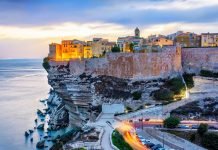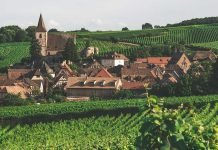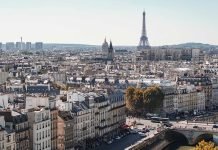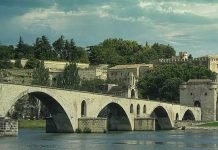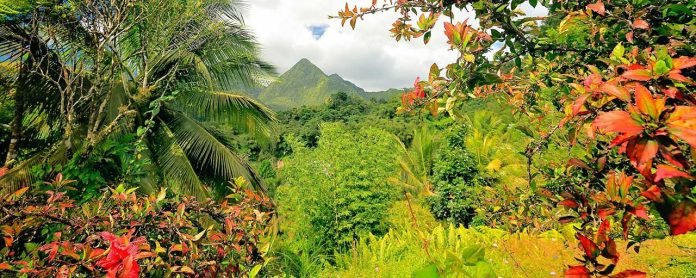Martinique, an island in the Caribbean, is an overseas region of France known for its stunning landscapes, rich biodiversity, and unique cultural heritage. From its lush rainforests to vibrant marine ecosystems, Martinique’s environment is diverse, but it faces significant conservation challenges. This article will delve into Martinique’s environment, biodiversity, flora and fauna, marine environment, conservation efforts to preserve the island’s unique qualities, and future imperatives.
Flora and Fauna of Martinique
Martinique is an enchanting island known for its stunning natural beauty. From lush forests to vibrant coral reefs, Martinique boasts a diverse range of flora, fauna, and marine life. In this article, we will delve into the captivating world of Martinique’s flora, fauna, and marine environment.
Tropical Rainforests: Martinique is home to lush tropical rainforests, such as the Parc Naturel Régional de Martinique. These forests are characterized by dense vegetation, towering trees, and a rich variety of plant species.
Exotic Flowers: The island is adorned with an array of colorful flowers, including hibiscus, bougainvillea, and orchids. These vibrant blooms contribute to Martinique’s picturesque landscapes.
Palms and Coconut Trees: Palm trees, including the iconic coconut palm, are a common sight in Martinique, adding to the island’s tropical ambiance.
Birdlife: Martinique is a paradise for birdwatchers, with over 150 species of birds inhabiting the island. You can spot colorful birds like the Martinique Oriole, Purple-throated Carib, and the White-breasted Thrasher.
Reptiles and Amphibians: Martinique is home to several reptile and amphibian species, including the Anolis lizard, the endemic Martinique Tree Frog, and the Lesser Antillean Whistling Frog.
Marine Turtles: The coasts of Martinique serve as nesting grounds for several species of marine turtles, including the Green Turtle and the Leatherback Turtle. Witnessing their nesting rituals is a truly awe-inspiring experience.
Marine Environment of Martinique:
Coral Reefs: Martinique’s surrounding waters boast extensive coral reef systems teeming with life. Diving or snorkeling in sites like Diamond Rock and Anse Dufour provides a chance to explore the vibrant underwater world.
Marine Biodiversity: The waters around Martinique are home to a diverse range of marine life, including colorful fish like parrotfish, angelfish, and butterflyfish. You may also encounter rays, sea turtles, and even dolphins.
Mangrove Forests: Martinique’s coastline features mangrove forests, which serve as important ecosystems for various marine species. These unique habitats provide shelter, breeding grounds, and nutrient-rich environments.
Conservation Efforts: Martinique recognizes the importance of protecting its natural heritage and has implemented several conservation initiatives:
The Parc Naturel Régional de Martinique, covering nearly 63,000 hectares, safeguards the island’s natural resources.
Sustainable tourism practices, such as responsible diving and snorkeling, are encouraged to minimize the impact on marine ecosystems.
Education and awareness programs aim to promote environmental consciousness among locals and visitors alike.
Challenges
Climate change, overfishing, and pollution pose significant threats to Martinique’s marine environment. Coral bleaching events, primarily caused by rising sea temperatures, and ocean acidification are having a devastating effect on coral reefs. Overfishing depletes fish stocks and disrupts the balance of marine ecosystems.
Conservation Efforts
Protected Areas
The Regional Natural Park of Martinique
The Regional Natural Park of Martinique is one of the most prominent protected areas on the island. Encompassing two-thirds of the island’s land area, this park was established to protect the island’s rich biodiversity, including its unique flora, fauna, and ecosystems. It is not just a protected area, but a living space, encompassing a multitude of towns and villages where thousands of people live and work.
UNESCO Biosphere Reserve
In recognition of its significant biodiversity and the efforts to conserve it, the park has been designated as a member of the World Network of Biosphere Reserves coordinated by UNESCO. This status not only highlights the global significance of Martinique’s natural heritage but also brings international attention and support to conservation efforts on the island.
Other Protected Areas
In addition to the Regional Natural Park, Martinique has several other smaller protected areas, such as marine reserves and specific zones designated for the protection of certain species, like the nesting sites for sea turtles.
Community Involvement
Beach Clean-Ups
One of the most direct ways that the local community gets involved in conservation is through organized beach clean-ups. These events, often hosted by local environmental groups or government agencies, encourage community members to help remove litter and other pollutants from Martinique’s shores.
Wildlife Monitoring
Community members also play an important role in monitoring the island’s wildlife. For example, local volunteers work closely with conservation organizations to monitor sea turtle nesting sites, tag and track specific animals, and collect data on bird populations.
Rehabilitation and Rescue
Locals are often the first to respond when wildlife is in trouble. For example, they might work with rescue centers to rehabilitate injured or sick animals, such as sea turtles affected by marine pollution or birds injured by storms or human activity.
Government and NGO Initiatives
Reforestation Projects
The government of Martinique, often in partnership with NGOs, has been working on reforestation projects aimed at restoring native forests that have been degraded or lost due to agriculture, development, or natural disasters. These projects not only help to restore ecosystems but also act as a carbon sink to mitigate the effects of climate change.
Coral Reef Monitoring and Restoration
Recognizing the critical importance of healthy coral reefs for marine biodiversity and the island’s economy, the government and various NGOs are engaged in efforts to monitor the health of these ecosystems and undertake restoration projects where necessary. This might involve activities such as planting new corals grown in nurseries, removing invasive species, and implementing new regulations to reduce pollution and overfishing in sensitive areas.
Environmental Education Programs
To ensure future generations are equipped to protect Martinique’s environment, the government and NGOs are heavily involved in environmental education. This includes creating curriculum materials for schools, hosting community workshops and seminars, and running public awareness campaigns on issues ranging from the importance of biodiversity to the practical steps individuals can take to reduce their environmental impact.
Policy and Regulation
The government of Martinique is actively engaged in developing and enforcing policies and regulations aimed at protecting the environment. This includes land-use planning regulations, fishing quotas, and restrictions on pollutants and harmful agricultural practices.
The preservation of Martinique’s extraordinary biodiversity and natural beauty is a shared responsibility. From the establishment of protected areas like the Regional Natural Park of Martinique to the hands-on efforts of local communities and the policy initiatives of the government and NGOs, many actors are involved in the vital task of conservation. Their collaborative efforts are shaping a more sustainable future for Martinique, demonstrating a model for integrated and community-driven conservation strategies.
Imperatives for the Future
The implications of climate change on Martinique, like many other regions, are significant and wide-ranging. Here are some key implications of climate change on the island:
Rising Sea Levels: One of the most visible impacts of climate change is rising sea levels. As global temperatures rise, glaciers and ice caps melt, leading to increased sea levels. Martinique, being an island, is particularly vulnerable to coastal erosion, flooding, and saltwater intrusion into freshwater sources.
Increased Intensity of Tropical Storms: Climate change is expected to lead to more intense and frequent tropical storms and hurricanes. Martinique already experiences these weather events, but with climate change, they are likely to become more severe, resulting in higher wind speeds, heavy rainfall, and potential damage to infrastructure, agriculture, and ecosystems.
Changes in Rainfall Patterns: Climate change can disrupt rainfall patterns, leading to changes in both the timing and distribution of rainfall. Martinique relies heavily on rainfall for its agriculture and water supply. Alterations in precipitation patterns can impact crop yields, water availability, and overall ecosystem health.
Coral Bleaching and Marine Ecosystems: Rising sea temperatures associated with climate change can cause coral bleaching events, leading to the deterioration of coral reefs. These reefs support a diverse range of marine life and play a crucial role in protecting coastal areas from erosion. The loss of coral reefs can have negative implications for both the marine ecosystem and the tourism industry.
Heatwaves and Health Risks: Climate change contributes to an increase in extreme heat events and heatwaves. These conditions can pose health risks, particularly for vulnerable populations, including the elderly and those with pre-existing health conditions. Heatwaves can also impact agricultural productivity and livestock health.
Disruption of Biodiversity: Climate change can disrupt ecosystems and impact the distribution and behavior of plant and animal species. Some species may struggle to adapt to changing conditions, leading to shifts in species composition and potential loss of biodiversity. This can have cascading effects on ecosystem functioning and food webs.
Impacts on Tourism and Economy: Martinique’s economy heavily relies on tourism, and climate change can have indirect impacts on this sector. Damage to natural attractions, such as coral reefs and beaches, can affect the attractiveness of the island as a tourist destination. Additionally, extreme weather events can disrupt tourism activities and infrastructure, leading to economic losses.
It is crucial for Martinique, in collaboration with international efforts, to take proactive measures to mitigate and adapt to climate change. This includes reducing greenhouse gas emissions, promoting sustainable practices, implementing coastal protection measures, and investing in climate-resilient infrastructure and agriculture.
Sustainable Development
Balancing the needs of development and conservation is a critical challenge. Future efforts should focus on sustainable tourism and agriculture practices that protect the environment while supporting the local economy. This includes encouraging eco-tourism and organic farming.
Education and Awareness
Educating locals and visitors about the importance of conservation and the unique biodiversity of Martinique is crucial for fostering a culture of preservation. This involves incorporating environmental education in schools, community outreach programs, and awareness campaigns targeting tourists.

